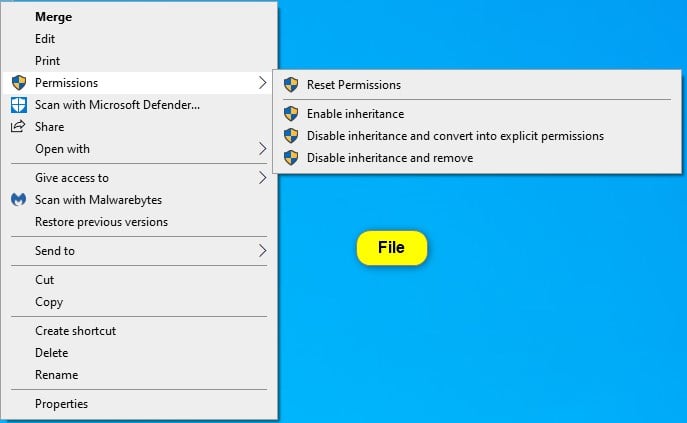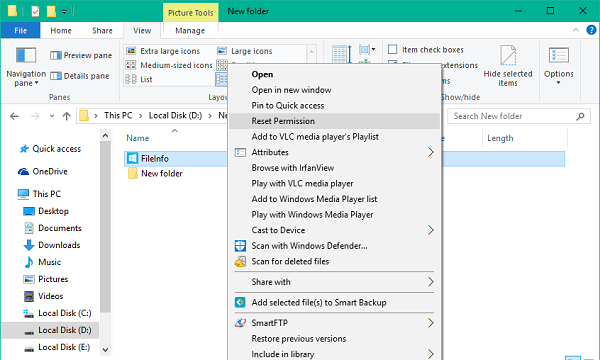

- PERMISSIONS RESET HOW TO
- PERMISSIONS RESET TRIAL
- PERMISSIONS RESET PASSWORD
- PERMISSIONS RESET DOWNLOAD
- PERMISSIONS RESET MAC
The “ Reset hidden and system files” feature enables you to change the visibility of all the system files from invisible to visible as well as deactivate their respective file attributes.ĩ. If you check this option, the permissions for every file and folder inside the chosen directory will also be reset.Ĩ.

The “ Apply for all sub directories” feature is useful if you intend to reset the permissions recursively. If you are not the owner of the file, you may select this option to gain more control.ħ. Checking the “ Take files ownership” feature allows you to take ownership of the file or folder prior to resetting the permissions. Although it is ticked by default, you may uncheck it if you intend to carry out other tasks.Ħ. The “ Reset files permissions” feature is the fundamental option that enables the utility to carry out its function. After selecting the folder, click “Ok”.ĥ. To select the folder you intend to reset its permissions, click the “ Choose folder” button. Thereafter, a simple user interface will pop up, which allows you to specify various settings for using the tool.Ĥ.
PERMISSIONS RESET PASSWORD
Enter the password (the current password is lallouslab) and click “Ok”. Open the zipped folder and run the executable file.ģ.
PERMISSIONS RESET DOWNLOAD
Download the Reset NTFS file permission tool from here. Here is the process for resetting NTFS permissions using this graphical tool.ġ.
PERMISSIONS RESET HOW TO
How to reset the NTFS Permissions using a UI tool The Reset NTFS permissions utility is simply a shell that works by combining various utilities from Microsoft, including:Īll the commands that are going to be executed are displayed to you beforehand in a text area, allowing you to make any necessary tweaks before they are executed. Before launching it, you need to ensure you enjoy administrative privileges on the system. The tool has an easy-to-use interface with minimal features that will ensure the task is completed quickly and effectively. However, if you are not tech-savvy and following commands make your head to spin, you can use a very light utility called Reset NTFS file permission (actually, it’s about 60 KB!). You can reset the NTFS permissions of files and folders directly from the command line. So, when you do not have sufficient permissions to control the resources on your system, resetting the NTFS permissions may be the only solution you have. In the Windows operating system, the New Technology File System (NTFS) permissions are used to control the access to files and folders and prevent inadvertent changes from unauthorized users as well as malicious applications. Here you’ll find a How To guide on how to use an easy-to-use UI tool that gets you covered!
PERMISSIONS RESET TRIAL
You may need to employ some trial and error to solve this problem.Do you need to reset the NTFS Permissions of a file or folder? Permissions on Copied Items: It's difficult to predict what permissions macOS will assign when you copy files over an external volume, SMB, or FTP.But if you store items for use by multiple people on a permanent basis, then issues can arise. If you're using this folder as a repository for files in transit, then permission problems are unlikely.


Permissions stay the same until something or someone comes along and changes them. In case of a folder, execute means someone can list its contents provided the read permission is also enabled.įurther, to say Disk Utility repairs permissions makes it sound like permissions can go bad or become corrupted over time.
PERMISSIONS RESET MAC
Let's break down the three types of users that appear in Mac permission fields:


 0 kommentar(er)
0 kommentar(er)
